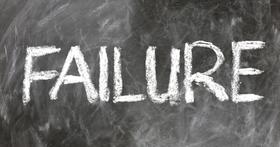Lillie J Jackson Early Childhood Center serves 436 students in grades Prekindergarten.
The student-teacher ratio of 9:1 is lower than the Texas state level of 14:1.
Minority enrollment is 89% of the student body (majority Hispanic), which is higher than the Texas state average of 75% (majority Hispanic).
Quick Facts (2025-26)
- Grades: Prekindergarten
- Enrollment: 436 students
- Student-Teacher Ratio: 9:1
- Minority Enrollment: 89%
- Source: National Center for Education Statistics (NCES), TX Dept. of Education
Top Rankings
Lillie J Jackson Early Childhood Center ranks among the top 20% of public schools in Texas for:
Category
Attribute
Student Attention
School Overview
Lillie J Jackson Early Childhood Center's student population of 436 students has declined by 36% over five school years.
The teacher population of 46 teachers has grown by 39% over five school years.
Grades Offered
Grades Prekindergarten
Total Students
436 students
Gender %
Total Classroom Teachers
46 teachers
School Calendar
School Rankings
The diversity score of Lillie J Jackson Early Childhood Center is 0.56, which is less than the diversity score at state average of 0.64. The school's diversity has stayed relatively flat over five school years.
Student-Teacher Ratio
9:1
14:1
American Indian
1%
n/a
Asian
9%
6%
Hispanic
64%
53%
Black
14%
13%
White
11%
25%
Hawaiian
n/a
n/a
Two or more races
1%
3%
All Ethnic Groups
Participates in the National School Lunch Program (NSLP)
Yes
Eligible for Free Lunch
70%
57%
Eligible for Reduced Lunch
11%
5%
School Statewide Testing
School District Name
Source: National Center for Education Statistics (NCES), TX Dept. of Education
School Notes
- School Mascot: Lions
Profile last updated: 02/09/2025
Frequently Asked Questions
How many students attend Lillie J Jackson Early Childhood Center?
436 students attend Lillie J Jackson Early Childhood Center.
What is the racial composition of the student body?
64% of Lillie J Jackson Early Childhood Center students are Hispanic, 14% of students are Black, 11% of students are White, 9% of students are Asian, 1% of students are American Indian, and 1% of students are Two or more races.
What is the student-teacher ratio of Lillie J Jackson Early Childhood Center?
Lillie J Jackson Early Childhood Center has a student ration of 9:1, which is lower than the Texas state average of 14:1.
What grades does Lillie J Jackson Early Childhood Center offer ?
Lillie J Jackson Early Childhood Center offers enrollment in grades Prekindergarten
What school district is Lillie J Jackson Early Childhood Center part of?
Lillie J Jackson Early Childhood Center is part of Lewisville Independent School District.
School Reviews
5 10/10/2025
We were scared to put our son back in school. Because he gets bored easily and he needs alot of attention. But since bring him to Lillie J Jackson this year for Pre-K. He has changed, his stutter is gone and he is talking about everything he loves about school and can't wait to go back the next day. His teacher in the Deer Classroom is amazing and she keeps us parents in the loop and I wish she could be his teacher for a few more years because he loves her so much.
Review Lillie J Jackson Early Childhood Center. Reviews should be a few sentences in length. Please include any comments on:
- Quality of academic programs, teachers, and facilities
- Availability of music, art, sports and other extracurricular activities
Recent Articles

School Vouchers: Updated Pros and Cons (2025 Review)
Comprehensive 2025 analysis of school vouchers, weighing benefits and challenges for families, funding, outcomes, and policy directions.

Benefits and Drawbacks of Homework in 2025
Explore updated 2025 insights on homework鈥檚 benefits, drawbacks, mental health impact, best practices, and policy trends in U.S. public schools.

Charter Schools vs Public Schools 2025: Key Differences & Trends
Explore updated 2025 insights comparing charter schools vs public schools, enrollment, academic outcomes, funding, and real-world examples for families and educators.





